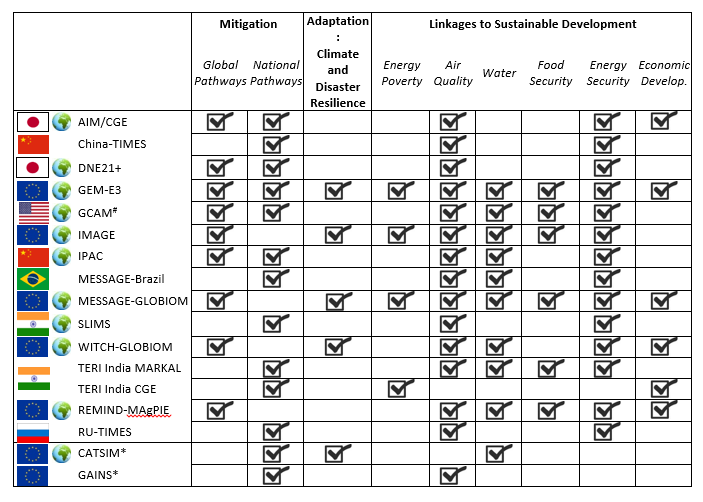Work Package 3
Coherent national and global low-carbon development pathways
There is a broad literature on transformation pathways based upon global modelling approaches (see Clarke et al. 2014 for an overview), as well as on country-level model-based climate protection strategies based upon national models (e.g., SDSN and IDDRI 2014). Some attempts have been made to compare country-level transformation pathways from global modelling studies with those from national modelling work (Calvin et al., 2012, AME; Chen et al., 2013, RoSE; Knopf et al., 2013, EMF-28; van Sluisveld et al., 2014, LIMITS). These studies indicate that on the country level results regarding technology use and mitigation potentials from global models can differ substantially from those of national models. These differences are important for international climate negotiation processes, which need to rely on coherent and consistent information. We are convinced that global studies can benefit from the often more detailed representation of national circumstances and policy priorities in the national studies, while at the same time national studies can be strengthened by utilising the information on interactions between different regions and climate implications that is available from the global models.
The central aim of WP3 is to develop integrated low-carbon development pathways that overcome the limitations of both national and global studies and to derive roadmaps that respect both the national circumstances of individual countries and the opportunities and challenges present in a highly interconnected world. This key objective can be broken down into more specific goals. Most notably these are: (i) furthering the understanding of differences in country-level results between global and national models, (ii) developing a new generation of national transformation pathways that account for climate and other development objectives, (iii) improving global model scenarios with regard to their representation of country-specific trends and circumstances and of development needs, (iv) developing country-specific climate-risk-focussed adaptation portfolios that complement mitigation strategies (Mechler et al., 2014), and (v) synthesising results from the various modelling frameworks into a coherent vision of low-carbon development pathways on the national and global level, spelling out policy priorities for the near-term in particular. The national, global and sectoral models contributing to this exercise are listed in Table 1.1.
Table 1.1: Overview of modelling tools applied in the CD-LINKS project and their contribution to different analyses. Notes: Globe icons denote models with global coverage, (*) denotes disciplinary models with focus on specific areas (adaptation/resilience, air quality/health) that will be linked to national pathways, (#) denotes an external partner.
WP3 will be sub-divided into five tasks, owing to its substantial breadth and depth of coverage and the large number of research teams involved. The work package in some ways functions as a nexus point of the overall CD-LINKS project, given its various linkages to other WPs. For instance, it will make great use of the insights generated from the assessment of existing national and international policy proposals as reviewed in WP1 and WP2, and it will harness the new capabilities of models to account for multiple sustainable development objectives, which is a central aim of WP4. The low-carbon development pathways then feed into WP5, which translates the pathway results into tangible policy recommendations in several areas, including financing of the transformation, trade issues and infrastructure needs.
Key research questions:
- How far are national and global low-carbon development pathways apart from each other with respect to achieving climate and development objectives? How can national and global perspectives be consolidated?
- What are the main building blocks of national G20 roadmaps for achieving decarbonisation, climate and disaster resilience, and sustainable development, and how can they be integrated with sustainable solutions to the climate problem at the global level?

